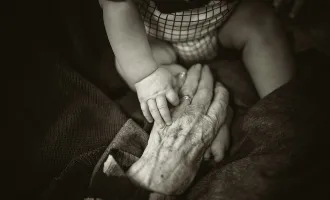When Your Jaw Has its Own Soundtrack
Hey Ilka! My jaw pops and clicks when I open it all the way. Sometimes it feels a little stuck, and I have to shift it when I eat. It doesn’t hurt, but what’s the deal?
Basics about the TMJ
The temporomandibular joint (TMJ) is the articulation between your mandible (lower jaw) and your temporal bones. You actually have two temporomandibular joints—one on each side—and each TMJ is cushioned with an articular disk. If you put your finger right in front of your ear, you’ll feel the heads of your mandible (called the condyles) come forward when you open wide and return backward when you close your mouth. In typical anatomical arrangement, the articular disk sits between the condyle and the temporal bone and moves forward and backward with the condyle. The joint is further stabilized by the delicate balance of several muscles that span from the mandible to the cranium.
The most common reason for people to have a pop in their TMJ is that the articular disk is anteriorly displaced. Thus, when the condyle moves forward during opening, it butts up against the disk, causing a catch, and then pops over the disk, creating a sound. When the condyle is in its forward position (during maximal opening), the disk is said to have been “reduced” into its typical position between the condyle and the temporal bone. When the jaw is closed, the disk slips forward again into its anterior position, often creating a second click (called a “reciprocal click”) on closing.
Radiographic studies have shown that although disk displacement is significantly more common in those with TMJ pain, greater than 1/3 of asymptomatic, healthy adults have displaced disks. Basically, if you don’t have pain or limitation in your jaw opening, popping and clicking can be totally normal! Contrary to what used to be popular belief, most dental malocclusions (“bad bites”) do not cause jaw popping or dysfunction, although there are special cases that can contribute.
When noises are a concern
Luckily, painless jaw popping is not a sure indicator of future TMJ pathology. Temporomandibular joint disorders (TMD) come in three flavors: jaw muscle disorders, disk derangements (the scary kind, when the disk cannot reduce or is too deformed to provide adequate cushioning) and bony dysfunction (i.e. arthritis). You should mention your joint sounds to your dentist or physician at your next exam so your baseline function can be documented. This allows for accurate comparison if the popping ever becomes painful, if you are unable to open your jaw all the way, or if the distinct pop ever changes to a grating or crackling sound (known as crepitus).
Simple self-treatment strategies
The following are a few self-management interventions you can implement:
- Wiggle exercise. Every 10 minutes, wiggle your jaw side to side a few times and then let your jaw rest. This keeps your jaw muscles from tensing up and loading the TMJ.
- Avoid: gritting, clenching, grinding, nail biting and chewing gum for long periods of time. Just don’t do it.
- Allow your jaw to rest. To find the resting position of your jaw, swallow, let your tongue stay at the roof of your palate, and relax your jaw muscles. Your teeth should be 2 to 5 millimeters apart, and should not touch unless you are eating.
- Work on your neck posture. Your neck position affects the position of facial musculature, so sitting upright with your neck in neutral flexion and extension will position your TMJ in better alignment.


